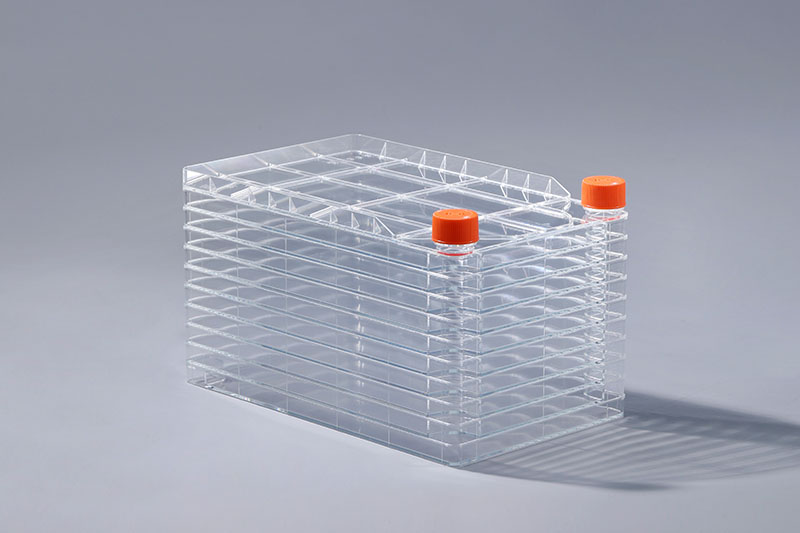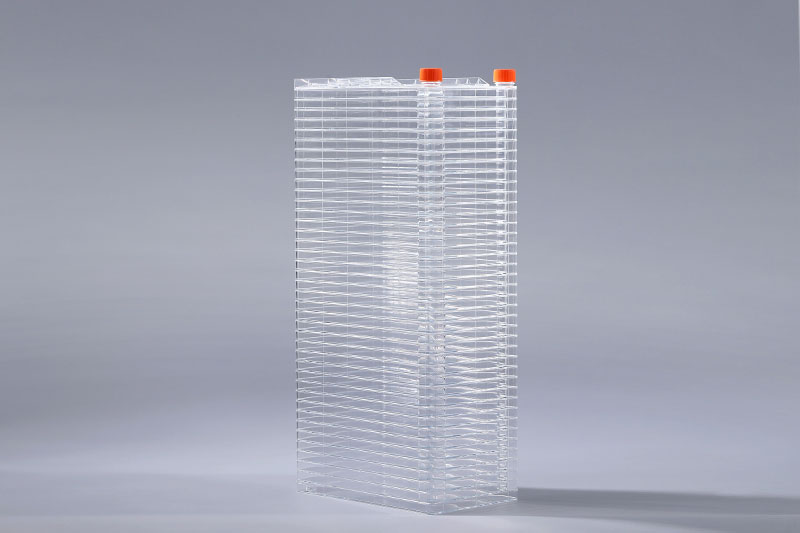Cell factory is a common cell consumable for large-scale cell culture. It is mainly used in the vaccine industry, cell gene therapy and stem cell fields. So how does the cell factory help the efficient and stable production of vaccines?
The industrial production of vaccines is extremely challenging. In the process, cell expansion is involved. Given the complexity of the production process, how to safely and stably scale up has become the focus of the industry. The principle of cell culture expansion is that large-scale culture and small-scale culture maintain a relatively stable environment, and only in the same environment can cell growth density, viability and product expression remain stable. A cell factory is a delicately designed cell culture device, which takes up less space, reduces pollution, increases yield, and has good controllability. It is accepted by more and more biopharmaceutical manufacturers and scientific research institutions. The cell factory realizes the expansion of cells by increasing the number, and the consistency of linear amplification is good, which helps to shorten the process development process and speed up the vaccine development process.
FuDau 10 Layers Cell Factory Systems
Although there are differences in the production process of different vaccine types, the application of the cell factory is roughly as follows: after cell recovery, the cells are subcultured in a square bottle and then transferred to the cell factory for cultivation. The cell factory can be used as a carrier for large-scale cell expansion. Large-scale amplification of cells; it can also be used as a reactor to insert viruses in a cell factory to obtain a stock solution, and the finished product can be prepared after subsequent processing.
FuDau 40 Layers Cell Factory Systems
In addition, in the industrial production of vaccines, the contamination of exogenous microorganisms is also an aspect that needs to be paid attention to. The cell factory can realize the closed transfer of liquid through a professional pipeline system, and transfer the culture medium or cells directly into the cell factory through the connecting pipeline in a sterile environment, which greatly reduces the risk of exogenous contamination in the vaccine production process and improves the Vaccine production efficiency.
The FAI climbed 5.9 percent year-on-year in the first 11 months of 2018, quickening from the 5.7-percent growth in Jan-Oct, the National Bureau of Statistics (NBS) said Friday in an online statement.
The key indicator of investment, dubbed a major growth driver, hit the bottom in August and has since started to rebound steadily.
In the face of emerging economic challenges home and abroad, China has stepped up efforts to stabilize investment, in particular rolling out measures to motivate private investors and channel funds into infrastructure.
Friday's data showed private investment, accounting for more than 60 percent of the total FAI, expanded by a brisk 8.7 percent.
NBS spokesperson Mao Shengyong said funds into weak economic links registered rapid increases as investment in environmental protection and agriculture jumped 42 percent and 12.5 percent respectively, much faster than the average.
In breakdown, investment in high-tech and equipment manufacturing remained vigorous with 16.1-percent and 11.6-percent increases respectively in the first 11 months. Infrastructure investment gained 3.7 percent, staying flat. Investment in property development rose 9.7 percent, also unchanged.
 English
English




















































